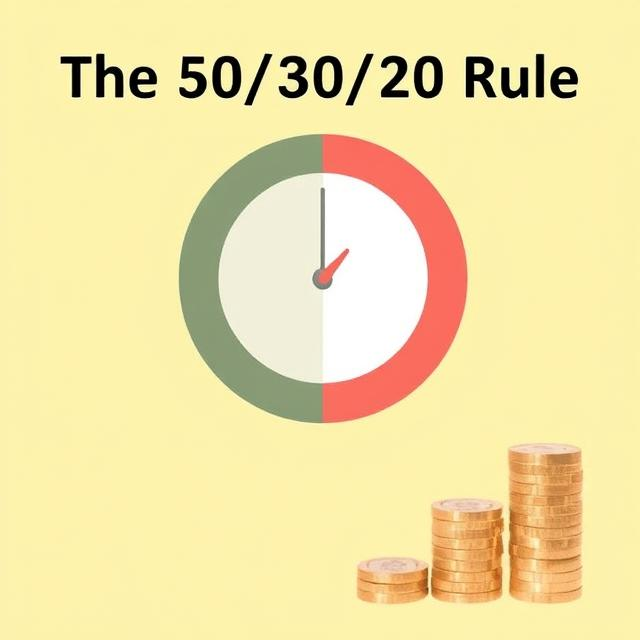The 50/30/20 Rule: A Simple Budgeting Method for Financial Success

Introduction
If you’re looking for a way to manage your money that’s both easy to follow and effective, the 50/30/20 rule is a great place to start. This simple budgeting method can help you gain control over your finances without feeling overwhelmed. Whether you’re on a small income or looking to refine your budgeting strategy, this post will walk you through the basics of the 50/30/20 rule and how you can use it to save, pay off debt, and live within your means.
What Is the 50/30/20 Rule?
The 50/30/20 rule is a straightforward budgeting method that divides your after-tax income into three main categories: needs, wants, and savings. This rule helps you allocate your income in a way that prioritizes essential expenses while still leaving room for fun and future goals.
- 50% – Needs: This category covers all your essential living expenses—things you can’t live without, like rent, utilities, groceries, insurance, and transportation.
- 30% – Wants: These are non-essential expenses that enhance your lifestyle, such as dining out, entertainment, shopping, or vacations.
- 20% – Savings & Debt Repayment: This portion is dedicated to building savings, paying off debt, and investing for the future.
Why the 50/30/20 Rule Works
The beauty of the 50/30/20 rule is that it provides structure while offering flexibility. It encourages you to prioritize your needs, allows for spending on things that bring joy (without guilt), and emphasizes the importance of saving and debt management. It’s an ideal budgeting method for beginners and those living on a smaller income because it helps you balance your financial goals with your lifestyle.
How to Apply the 50/30/20 Rule:
- Determine Your After-Tax Income
Start by calculating your after-tax income—this is the money you actually take home after taxes, not your gross income. If you’re salaried, this is simple; if you’re hourly or have a variable income, track your income over a few months to get an average. - Allocate Your Funds Based on the 50/30/20 Split:
- 50% for Needs: Add up all your essential living expenses. If your expenses exceed 50%, you’ll need to evaluate where you can cut back. Look for ways to lower bills, negotiate prices, or even move to a more affordable living situation if possible.
- 30% for Wants: This category gives you the freedom to enjoy life! However, if you’re trying to save, look for ways to lower this percentage by cutting back on luxuries or finding cheaper alternatives.
- 20% for Savings & Debt Repayment: This could be anything from building an emergency fund to paying off credit card debt, contributing to a retirement fund, or even investing.
Tips for Success with the 50/30/20 Rule:
- Automate Your Savings: Make saving easier by automating transfers to your savings account as soon as you get paid. That way, you won’t be tempted to spend what’s intended for savings.
- Track Your Spending: Use budgeting apps like Mint or PocketGuard to track where your money is going. You may be surprised at how much you spend on non-essentials!
- Review Your Budget Regularly: The 50/30/20 rule isn’t set in stone. If you get a raise, have an unexpected expense, or hit a new financial goal, adjust your budget accordingly.
- Be Realistic: If you’re working with a smaller income, it might be hard to put 50% toward needs and 20% toward savings right away. That’s okay! Focus on what’s realistic for your situation, and adjust as you go.
How the 50/30/20 Rule Can Help You Save on a Small Income
Even if your income is modest, the 50/30/20 rule still works. It’s all about finding the balance between living within your means and prioritizing your financial goals. Here are a few ways it can help you:
- Prioritize Needs Without Sacrificing Wants: The 50/30/20 rule ensures you’re covering your essentials, while still giving you room to enjoy life. You won’t have to feel guilty about dining out or buying something you want.
- Focus on Saving for the Future: The 20% set aside for savings and debt means you’re steadily building your financial security. Even small contributions to savings can have a huge impact over time.
- Debt Reduction: If you’re carrying debt, the 20% portion of the rule can go toward paying it off. Reducing debt is just as important as saving for the future.
Conclusion
The 50/30/20 rule is a simple and effective budgeting method that can help you take control of your finances, even if you’re living on a small income. By allocating your money into three key categories—needs, wants, and savings—you’ll create a clear financial plan that promotes balance and helps you achieve your financial goals. Start small, track your progress, and remember that financial success isn’t about perfection—it’s about consistency and making smarter choices.



